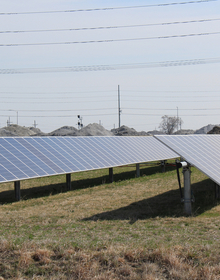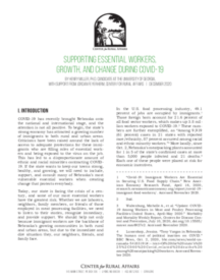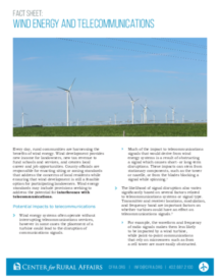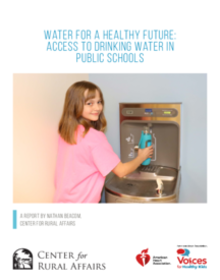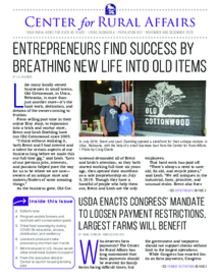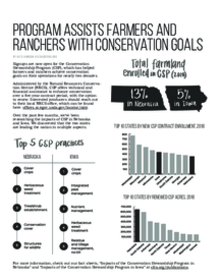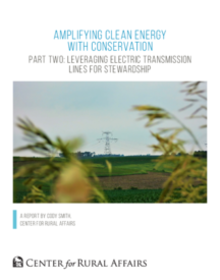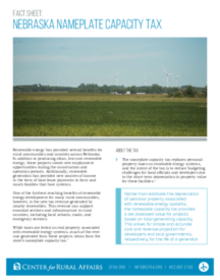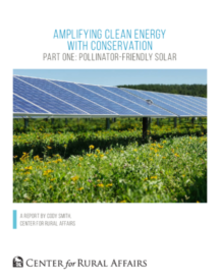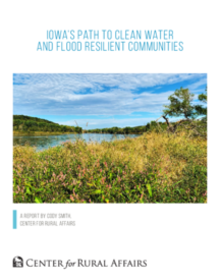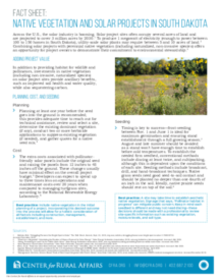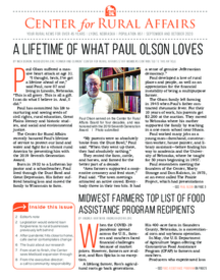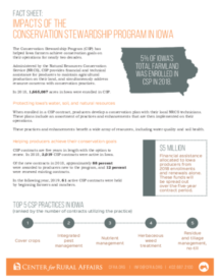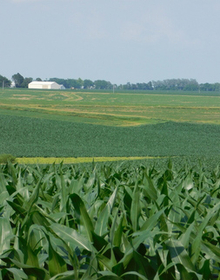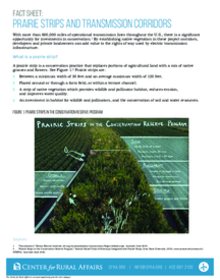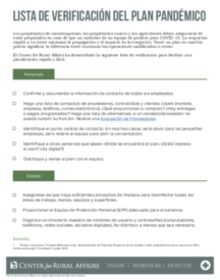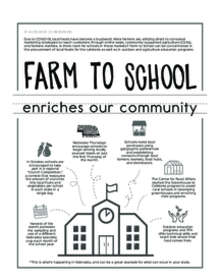We aren't afraid of the weeds. The people living in rural America deserve a serious and in-depth look at the issues and forces impacting their communities.
“Nebraskans are lucky to have access to great renewable energy potential,” said Lu Nelsen, senior policy associate for the Center. “Wind energy has already grown significantly in the state, and we’re starting to see solar grow to deliver many of the same benefits to communities across the state.” Lu...
- Policy
COVID-19 has recently brought Nebraska onto the national and international stage, and the attention is not all positive. To begin, the state’s strong economy has attracted a growing number of immigrants to both rural and urban areas. Criticisms have been raised around the lack of access to adequate...
- Small Towns
Every day, rural communities are harnessing the benefits of wind energy. Wind development provides new income for landowners, new tax revenue to fund schools and services, and creates local career and job opportunities. County officials are responsible for enacting siting or zoning standards that...
- Policy
Renewable energy has rapidly expanded throughout the U.S. as prices of production have fallen and the cost of operating fossil fuel-based generation resources continues to grow. Market forces have facilitated the widespread adoption of wind energy by utilities, rural electric cooperatives, and other...
- Policy
Childhood obesity is an ongoing epidemic in the U.S. Approximately 19.3 percent of American youth ages 2 to 19 have a body mass index above the 95th percentile, according to the Centers for Disease Control and Prevention’s (CDC) age and sex-specific metrics for healthy body weight. Percentages of...
- Policy
At the Center for Rural Affairs, the majority of our staff have worked from home for eight months now and will continue to do so for the foreseeable future. Like many of you, I have adjusted to my remote rural life.
- Farm and Food
- Small Towns
Signups are now open for the Conservation Stewardship Program (CSP), which has helped farmers and ranchers achieve conservation goals on their operations for nearly two decades. Administered by the Natural Resources Conservation Service (NRCS), CSP offers technical and financial assistance to...
- Farm and Food
Across the U.S., many cities, counties, and states are taking advantage of affordable renewable energy sources, such as solar and wind energy. Over the past nine years, the price of installing solar energy projects has decreased by 70 percent, while the average cost of constructing a wind energy...
- Policy
Renewable energy has provided several benefits for rural communities and counties across Nebraska. In addition to producing clean, low-cost renewable energy, these projects create new employment opportunities during the construction and operation periods. Additionally, renewable generation has...
- Policy
Throughout the Midwest region of the U.S., farmers, schools, and small businesses have been on the frontline of solar energy adoption. Collectively, states in the Midwest employ approximately 36,605 workers in the solar industry with 3,118.67 megawatts (MW) of installed solar capacity. These jobs...
- Policy
As Iowans, water is central to each of our most basic activities, and, in our state, there is a lot of it. Across Iowa, there are 416 square miles of surface water, which 3,155,070 residents rely on for recreation, drinking water, agriculture, or other purposes. At the same time, Iowa ranks second...
- Policy
Across the U.S., the solar industry is booming. Solar project sites often occupy several acres of land and are projected to cover 3 million acres by 2030. To produce 1 megawatt of electricity (enough to power between 100 to 150 homes in South Dakota), utility-scale solar plants may require between 5...
- Policy
Across the world, we continue to endure the coronavirus pandemic. Our work at the Center for Rural Affairs has evolved to support rural America through this time. One of the core values continuously on our minds is “CONSCIENCE that balances self-interest with an obligation to the common good and future generations.”
- Small Towns
- Farm and Food
- Policy
The Conservation Stewardship Program (CSP) has helped Iowa farmers achieve conservation goals on their operations for nearly two decades. Administered by the Natural Resources Conservation Service (NRCS), CSP provides financial and technical assistance for producers to maintain agricultural...
- Farm and Food
The Center for Rural Affairs recently undertook a project to research different designs of bee hives, their practicality in Nebraska, their weights, and honey production. The goal of the project is to strengthen the specialty crop industry in the state, and honey is a specialty crop. Using the...
- Farm and Food
Policy Associate Cody Smith hosts this virtual Rural Resiliency Forum featuring Iowa State Sen. Zach Wahls. Discussion covers clean energy, water quality, and climate adaptation. If you’d like to connect with Sen. Wahls, here is his contact information: Email: [email protected] State Capitol...
- Policy
- Small Towns
With more than 600,000 miles of operational transmission lines throughout the U.S., there is a significant opportunity for investments in conservation. By establishing native vegetation in these project corridors, developers and private landowners can add value to the rights of way used by electric...
- Policy
Los propietarios de microempresas, los propietarios únicos y los agricultores deben asegurarse de estar preparados en caso de que un miembro de su equipo dé positivo para COVID-19. La respuesta rápida a un brote minimiza la propagación y el impacto en los negocios. Tener un plan en marcha podría significar la diferencia entre continuar las operaciones modificadas o cerrar.
- Lending
Owners of microbusinesses, sole proprietors, and farmers need to make sure they are prepared in the event a member of their business tests positive for COVID-19. Rapid response to an outbreak minimizes spread and the impact on business. Having a plan in place could mean the difference between continuing modified operations or shutting down.
- Lending
Due to COVID-19, local foods have become a buzzword. More farmers are utilizing direct to consumer marketing strategies to reach customers through online sales, community-supported agriculture (CSAs), and farmers markets. Is there room for schools in these markets? Farm to School can be concentrated...
- Small Towns


